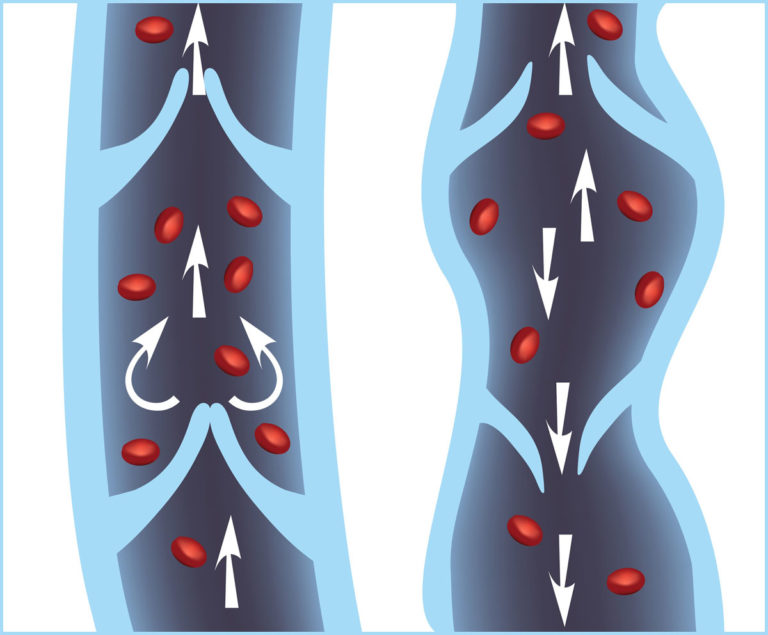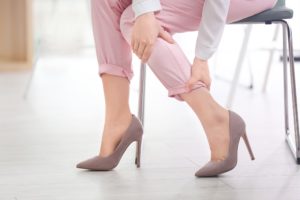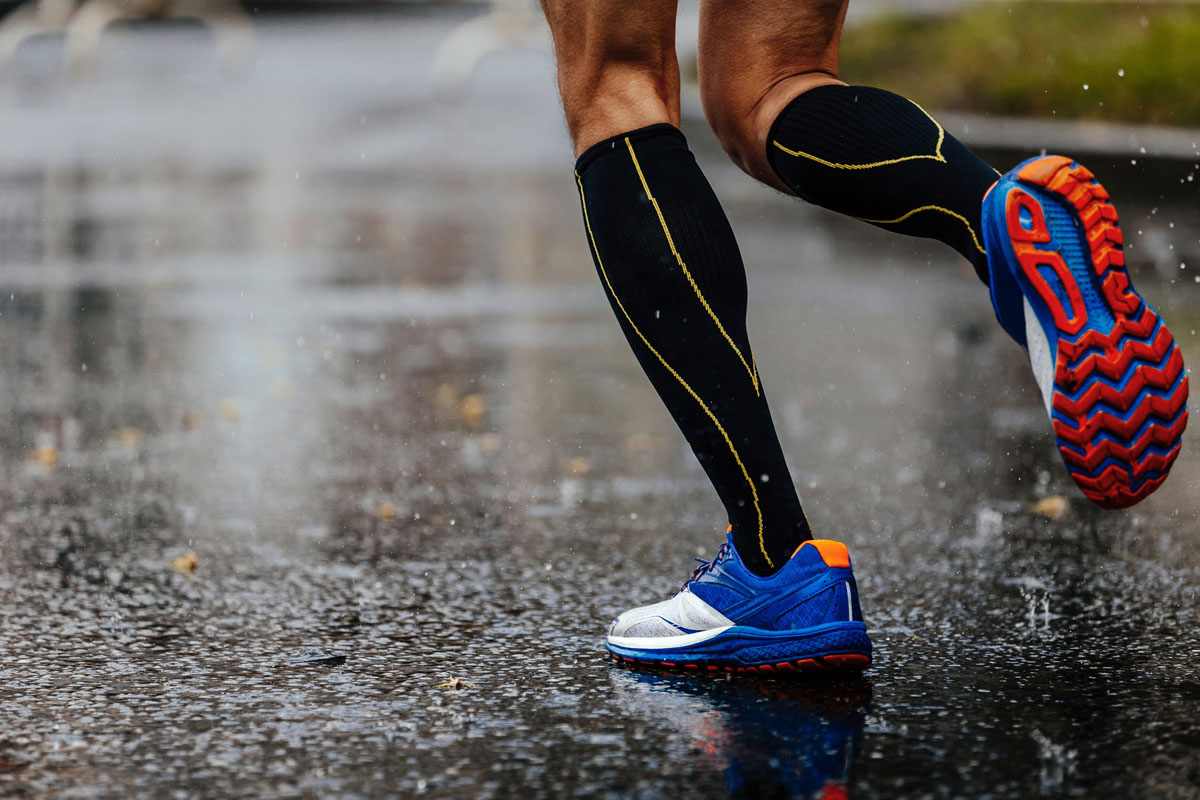 Chronic venous insufficiency, or CVI, is a health condition in which veins lose their structure and inhibit proper blood flow. Blood begins to accumulate in areas where the vein walls are particularly weak. This is seen most commonly in legs as blood has to flow upward to the heart. Vein valves that help ensure that this blood flow goes in the correct direction are compromised with CVI. Rather than keeping blood flowing in a single direction towards the heart, blood begins to flow in both directions, causing it to pool where the veins are weakest.
Chronic venous insufficiency, or CVI, is a health condition in which veins lose their structure and inhibit proper blood flow. Blood begins to accumulate in areas where the vein walls are particularly weak. This is seen most commonly in legs as blood has to flow upward to the heart. Vein valves that help ensure that this blood flow goes in the correct direction are compromised with CVI. Rather than keeping blood flowing in a single direction towards the heart, blood begins to flow in both directions, causing it to pool where the veins are weakest.
CVI affects millions of individuals in the United States and throughout the world. It is a treatable condition, however, most patients don’t even seek treatment. Knowing if you may be at risk for CVI can help you to make lifestyle changes now to help prevent this condition. While not all factors are within your control, some can be managed and symptoms lessened for a more fulfilling life.
Age, Gender, and History Risk Factors
Chronic venous insufficiency is more common in aging adults who are 50 years old or older. However younger individuals with a family history of deep vein thrombosis (DVT), varicose veins, and/or CVI may be at risk as well.
When it comes to gender, women are more affected by CVI than men are, particularly when they are pregnant. Female hormones during pregnancy, menopause, and menstruation can be factors for weakening vein walls.
Exercise and Mobility Risk Factors
Individuals with sedentary jobs and lifestyles also may have an increased risk of developing chronic venous insufficiency. The more movement and physical activity a patient can include into their daily routine, the better blood will circulate through their veins.
A large amount of pressure on legs can dilate veins as well. In this manner, weight also factors into an individual’s risk for CVI. Reducing foods with excess fats and instituting patterns for daily exercise are great ways to lose weight along with improving blood circulation.
CVI Symptoms
 Think you may be at risk for chronic venous insufficiency? Generally patients will experience one or more of the below symptoms if they suffer from CVI:
Think you may be at risk for chronic venous insufficiency? Generally patients will experience one or more of the below symptoms if they suffer from CVI:
- Leg pain or aches
- Appearance of varicose veins
- Leg and ankle swelling, particularly after standing for a long period of time
- Leg ulcers, or open sores
- Itchy and/or dry skin
What to Do
If you experience these symptoms, especially if you have some of the risk factors for CVI, please don’t hesitate to see a veins specialist. This common condition in many cases can be prevented or symptoms lessened in severity with the right lifestyle changes and habits.
Begin first by creating an exercise plan. Start small with perhaps a morning walk, leg exercises before getting into bed, or taking short breaks throughout the workday. Get up and get moving even if it’s only a few minutes at a time.
 While compression socks may not prevent CVI, they can help reduce leg pain and other symptoms. For many patients, wearing compression socks makes all the difference for alleviating their leg pain while standing, helping them to become more active. Varicose veins treatment, sometimes referred to as varicose vein removal, may be another appropriate solution to keep blood flowing where veins are strongest.
While compression socks may not prevent CVI, they can help reduce leg pain and other symptoms. For many patients, wearing compression socks makes all the difference for alleviating their leg pain while standing, helping them to become more active. Varicose veins treatment, sometimes referred to as varicose vein removal, may be another appropriate solution to keep blood flowing where veins are strongest.
At Heart of Dixie Vein & Vascular Center, we work to get you back on your feet without the leg pain, swelling, or aches you may be experiencing currently. Schedule a consultation appointment with us in Cedar City, Kanab, or St. George, UT. Our multiple locations and experienced physicians make it easy for Southern Utah patients to get the care they need sooner. Let us help you take control over chronic venous insufficiency and take back your life.



